And no, it wasn’t Doyle, Dane Bernbach nor Volkswagen. It was Jordan.
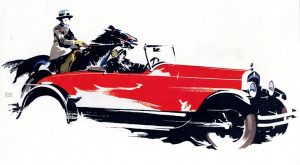
The Jordan Playboy was introduced in 1919 to compete against the Stutz Bearcat and Mercer Raceabout.
This week in 1931, the Jordan Motor Car Company of Cleveland, Ohio files for bankruptcy, having built some 65,000 cars since its founding in 1916. Certainly, it wasn’t big news. Many car companies succumbed to the economic impact of the Great Depression. And like many early automakers, Jordans were assembled cars. In other words, everything on the car, even the engine, was made by other companies. Jordan merely assembled it.
But it’s not cars that made Jordan famous. It was its advertising.
In an era when automotive advertising stuck to a cold, dreary recitation of facts, Jordan appealed to a buyer’s emotions, making them seem like the latest fashion accessories. Jordan was the first to ever do so, and it was the work of company founder Edward S. “Ned” Jordan.
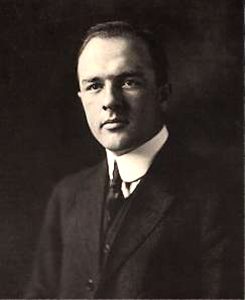 Read any Jordan ad, and you’ll find it’s unlike any other from that time.
Read any Jordan ad, and you’ll find it’s unlike any other from that time.
“After the dance – when tiresome chaperones have gone to bed and youth will have its fling – let’s wander away. Down the moonlit ribbon of a magic road on the alluring romance of the silvering snows – radiant under the sapphire stars.”
Compare that to a typical Ford Model T ad.
“With its many new refinements and even more complete equipment, at no extra cost to you, the Ford Sedan is now more than ever the world’s greatest enclosed car value. Terms if desired.”
USING SEX APPEAL TO SELL CARS
Ned Jordan, the man who revolutionized advertising copywriting, was born in 1882 in Merrill, Wisconsin, becoming a newspaper reporter while at the University of Wisconsin. Soon after, he was named the advertising manager for the Thomas B. Jeffery Automobile Company in Kenosha, Wisconsin in 1906 having married one of Jeffrey’s daughters. There, he learned the ropes of the business until 1915 when Jordan encouraged Jeffrey to sell the company to Charles Nash. Jordan had an ulterior motive. By then, he was planning to organize the Jordan Motor Car Company, which he established in Cleveland, Ohio the following year at the age of 33.
By 1918, 5,000 cars were leaving Jordan’s plant annually, not bad for a small independent. But it all changed with the introduction of the Jordan Playboy, a sports car designed to compete against the Stutz Bearcat and Mercer Raceabout. The idea for the car came about as Ned Jordan happened to dance with 19-year-old Eleanor Borton at a social event, when she asked him, “why don’t you build a car for the girl who loves to swim, paddle and shoot and for the boy who loves the roar of a cut out?”
He thanked her for a million-dollar idea.
Soon, the car and its ads took on a sensibility as young as its buyers, one that also targeted women, using sex appeal to close the sale.
“Eve walks into the showroom because she’s read an advertisement that is ‘down her alley,’ ” wrote Jordan about his approach to advertising. “No injector manifolds or gear reduction talk. No engineering details. That’s all fine and dandy if you’re selling locknuts.”
THE AD THAT CHANGED IT ALL
Yet for all the ads Jordan wrote for his company, it’s one ad from 1923 that is noted above all others – “Somewhere West of Laramie.” Jordan remembered later how the ad came to him abord a train heading to California.
“Where are we now?’ I inquired, to make conversation. ‘Oh, somewhere west of Laramie,’ yawned my companion. I took an envelope from my pocket, wrote down the phrase, and added, as I looked from the window, ‘there’s a bronco-busting, steer-roping girl who knows what I’m talking about. She can tell what a sassy pony, that’s a cross between greased lightning and the place where it hits, can do with eleven hundred pounds of steel and action when he’s going high, wide and handsome. The truth is—the Jordan Playboy was built for her.”
The ad immediately struck a chord, and letters of admiration poured into the automaker as Jordan continued to market their cars by touching on a reader’s emotions. Still, some ads sparked controversy, such as the infamous “Port of Missing Men” ad, which showed a lit upstairs window, with copy that hinted that the Jordan’s owners were in bed together. The ad garnered a letter from the New York Society for the Suppression of Vice, ordering him to refrain from publishing such indecent ads. The prose may seem tame today, but consider these ads appeared in the 1920s.
SO, WHAT HAPPENED?
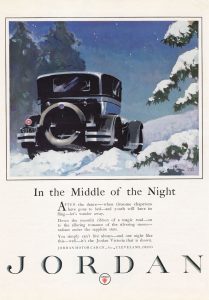
This ad also grabbed the attention of the New York Society for the Suppression of Vice. Because the car is not moving, and there’s a couple inside, it infers that they’re having sex, or so it was thought.
Jordan Motor Car Company reached its stride with the 1925 Model A Great Line Eight Playboy, powered by a new Continental 4.4-liter, 74-horsepower straight-eight engine. The following year saw Jordan produce more than 11,000 cars, its best year ever. But the company produced more cars than it sold. Then, in 1927, Jordan tried to sell a small car, the Model R Little Custom Tomboy. It flopped, not helped by the fact that production was delayed five months. Once it arrived, few buyers were tempted. The company’s fortunes and those of its founder were changing.
By this point, his health was failing, as was his marriage. In 1928, he lost control of the company, which survived through 1931 producing some of its finest cars. He remarried in 1940, and would go on to work in advertising, as well as author a column for Automotive News. He died in 1958.
Ironically, it’s his prose, not his cars, for which he is remembered today. Of them all, one Jordan Playboy ad he authored best captures the essence of automotive enthusiasts everywhere.
“Independence – freedom – the enjoyment of something besides mere transportation – speed – dash – the smooth flow of power from a wonderful Line Eight – the thrill of really going somewhere. That’s living.”

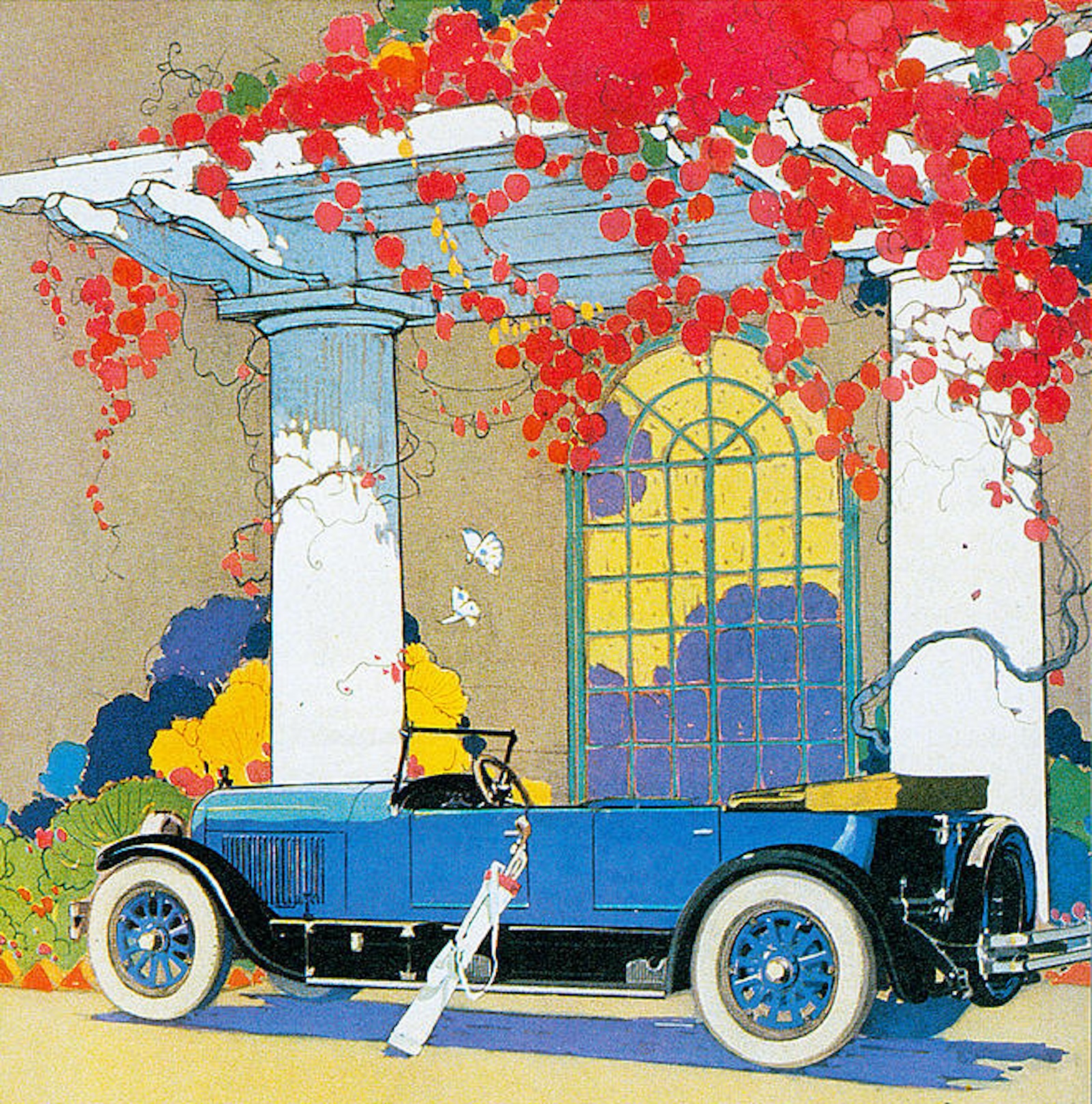
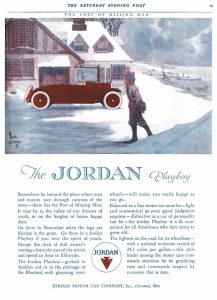



0 Comments